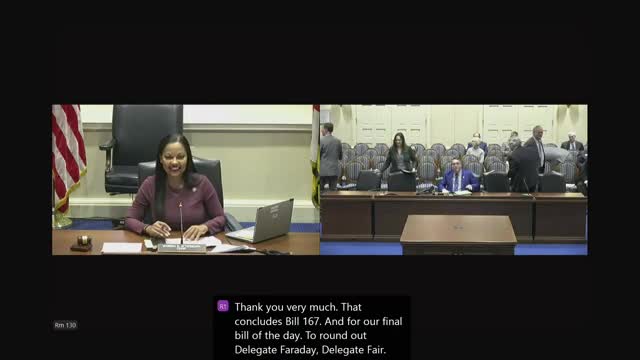Counties seek authority to set higher commercial property rates under HB 23, executives say tool would fund schools and transportation
January 28, 2025 | Ways and Means Committee, HOUSE OF REPRESENTATIVES, Committees, Legislative, Maryland
This article was created by AI summarizing key points discussed. AI makes mistakes, so for full details and context, please refer to the video of the full meeting. Please report any errors so we can fix them. Report an error »

House Bill 23 would allow Maryland counties and Baltimore City to adopt a higher property-tax rate for specified SDAT-defined commercial subclasses, capped at 12.5 percent above the standard county rate, sponsor Delegate Chris Fair and county leaders told the Ways and Means Committee on Jan. 28.
The measure is enabling only — it would not force counties to raise rates — and it includes guardrails intended to protect homeowners: the bill prohibits increasing residential property tax rates as a result of the measure, requires a residential tax credit on mixed-use parcels, and permits a small-business exemption or credit for businesses with 15 or fewer employees. Revenues raised under the provision would be dedicated to transportation and education costs, proponents said.
County executives and the Maryland Association of Counties said the authority is long requested: local officials argued that property taxes and state aid are constrained and that new, targeted local tools are needed to fund school construction, transportation capital and other county priorities. Supporters pointed to Northern Virginia as an example where local flexibility has been used to fund infrastructure and development.
Opponents — including commercial building owners, chambers of commerce and industry groups — warned the bill would burden a fragile commercial real-estate market, risk driving businesses and jobs to lower-tax jurisdictions, and ultimately pass costs to consumers. Witnesses from the office-building and retail sectors said vacancy rates have risen and values fallen in some office submarkets since the pandemic, and that a new local surtax on commercial property could accelerate disinvestment.
Ending note: Proponents urged the committee to advance the bill as a local-option revenue tool; opponents asked for caution to avoid compounding market stress. No committee vote was recorded at the hearing.
The measure is enabling only — it would not force counties to raise rates — and it includes guardrails intended to protect homeowners: the bill prohibits increasing residential property tax rates as a result of the measure, requires a residential tax credit on mixed-use parcels, and permits a small-business exemption or credit for businesses with 15 or fewer employees. Revenues raised under the provision would be dedicated to transportation and education costs, proponents said.
County executives and the Maryland Association of Counties said the authority is long requested: local officials argued that property taxes and state aid are constrained and that new, targeted local tools are needed to fund school construction, transportation capital and other county priorities. Supporters pointed to Northern Virginia as an example where local flexibility has been used to fund infrastructure and development.
Opponents — including commercial building owners, chambers of commerce and industry groups — warned the bill would burden a fragile commercial real-estate market, risk driving businesses and jobs to lower-tax jurisdictions, and ultimately pass costs to consumers. Witnesses from the office-building and retail sectors said vacancy rates have risen and values fallen in some office submarkets since the pandemic, and that a new local surtax on commercial property could accelerate disinvestment.
Ending note: Proponents urged the committee to advance the bill as a local-option revenue tool; opponents asked for caution to avoid compounding market stress. No committee vote was recorded at the hearing.
View full meeting
This article is based on a recent meeting—watch the full video and explore the complete transcript for deeper insights into the discussion.
View full meeting
